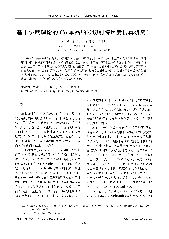摘要
One of the significant methods of multiscale simulation named bridging domain method which is a mixed atomistic-continuum formulation is reviewed. The mode related to atomistic/continuum coupling is introduced. The coupled method with the treatment of the overlapping subdomain is discussed, in which different scaling parameters (weigh factors) are adopted to calculate the energy of the system in the overlapping subdomain and to constrain the atomic and the continuum displacements by the Lagrange multiplier method. A bridging domain model is set up to investigate the effect of cutting speed on chip and workpiece atom force distribution in the nanometric cutting of single crystal copper. Simulation results show the cutting deformation coefficient decreases and the workpiece atom force increases with the increase of cutting speed. In addition, the machined surface qualities at different cutting speeds are investigated. The multiscale model and simulation of nanometric cutting are accomplished based on the bridging domain method, which lays a theoretical foundation for exploring the trans-scale simulation of nanometric cutting.
- 出版日期2011
- 单位哈尔滨工业大学
